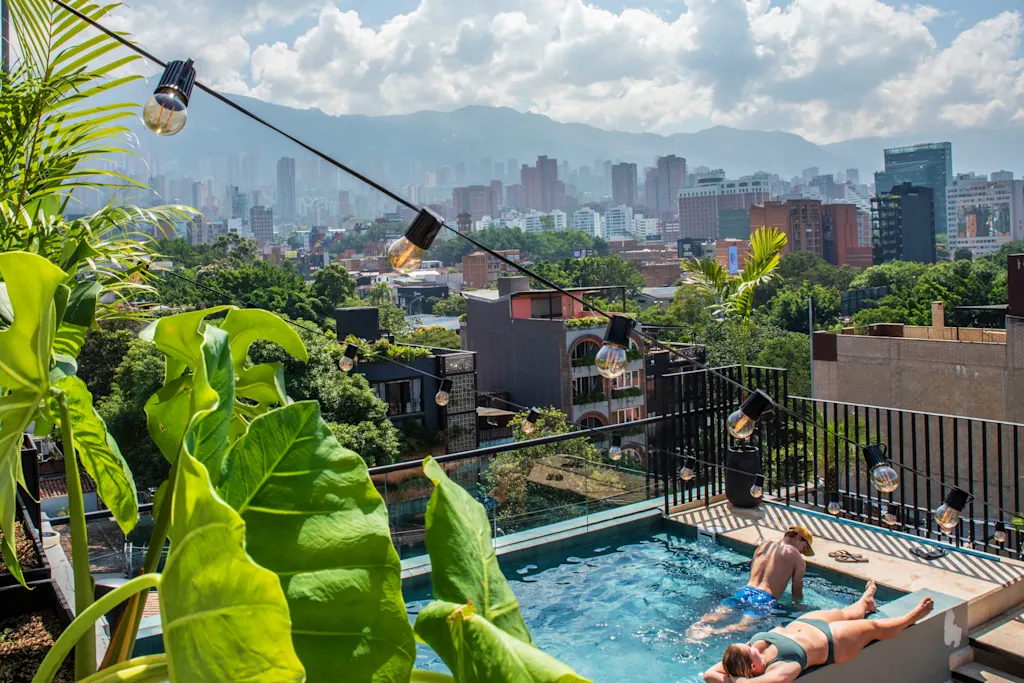We didn’t plan to stay in Medellín for over a week… it just sort of happened. And honestly? We could have stayed even longer. With a mix of jaw-dropping views, wild nightlife, fascinating history and the best football experience we’ve ever encountered, Medellín quickly became one of our favourite cities, not just in Colombia, but in the whole world.
Disclosure: This page contains affiliate links. By purchasing through these links, you support our work at no additional cost to you. Thank you for helping us inspire more travel adventures!
Where to Stay: The Best Hostels in Medellín
If you’re looking for hostels, Medellín is packed with excellent ones – sociable, clean, and with plenty of places to sip a cold Aguila and watch the world go by. These come with affiliate links—if you book through them, we earn a small commission at no extra cost to you.
Black Sheep Hostel – The classic. Legendary with backpackers, and for good reason. Super chill, great communal vibe, strong Wi‑Fi, and comfy beds. The Kiwi owner is a wealth of local knowledge. We stayed here and felt right at home.
Los Patios Hostel – A more upmarket choice. Two buildings (one lively, one quiet), rooftop bar, co‑working space, and even a small gym, ideal if you’re mixing work with play.
The Wandering Paisa – Love practising your Spanish? This community-driven hostel hosts nightly language exchanges, salsa lessons, and home‑style meals. Situated just a short walk from the Metro and Medellín’s lively party strip “La 70”, The Wandering Paisa is all about offering an authentic cultural experience. It’s a safe, sociable and comfortable base for travellers, with plenty of local activities and events designed to immerse you in real Paisa life. Oh and it’s super Cheap!
Best Things To Do in Medellín
There’s loads to do in Medellín. Here’s how we did it:
1. Comuna 13 Graffiti Tour
Once one of the most dangerous neighbourhoods, Comuna 13 has reinvented itself through graffiti and community activism.
How to do it: Join a small‑group walking tour leaving from San Javier metro station. Guides explain the history behind each mural and how the community literally fought back. Tours run daily and cost around COP 60,000 (£12–£15).
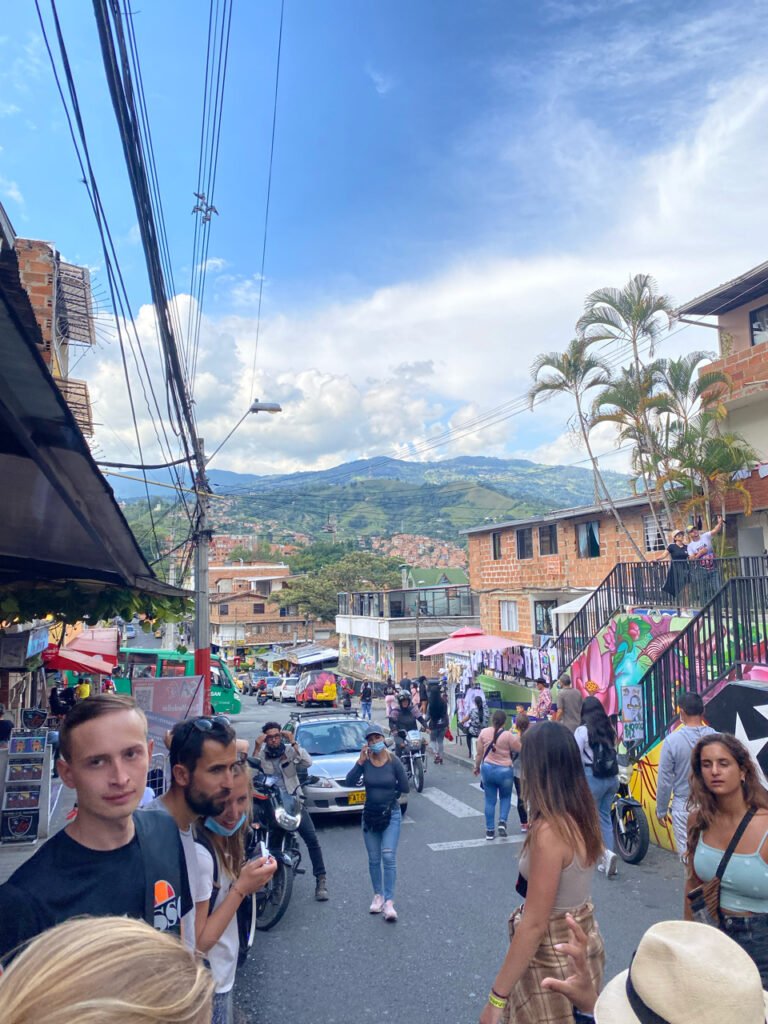
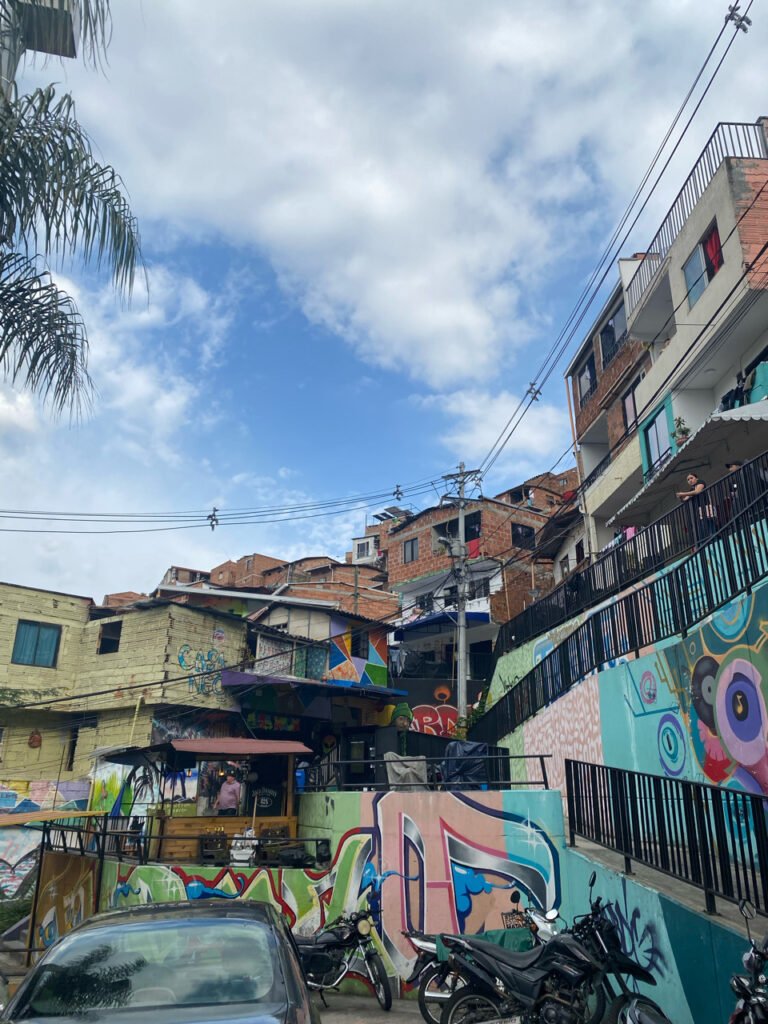
Pablo Escobar’s Secret Prison Hike (La Catedral)
Tucked away in the hills above Medellín lies one of the most bizarre pieces of the city’s history—La Catedral, the luxury prison Pablo Escobar built for himself. Yes, built for himself. It’s a mix of history, rumour, and jungle views, and getting there makes for a cracking half-day adventure.
How to get there:
The easiest way is to take a bus from Medellín to Envigado, which runs regularly and costs just a few pesos. From Envigado, you can grab a local taxi or tuk-tuk to the top, right where the prison ruins sit. It’s a steep drive, so skip the hike up unless you enjoy a long, sweaty uphill slog.
Once you’ve explored the eerie remains of Escobar’s former prison—complete with panoramic views of the valley below—you can hike back down the mountain into the small village of Envigado, grabbing snacks or a juice along the way. The descent takes around 1.5 to 2 hours, with jungle views, local life, and maybe a few dogs joining you for the stroll.
Top tip: Go early in the morning when it’s cooler and the light is better for photos. No need for a guide—this one’s easy to navigate solo with Google Maps or Maps.me.
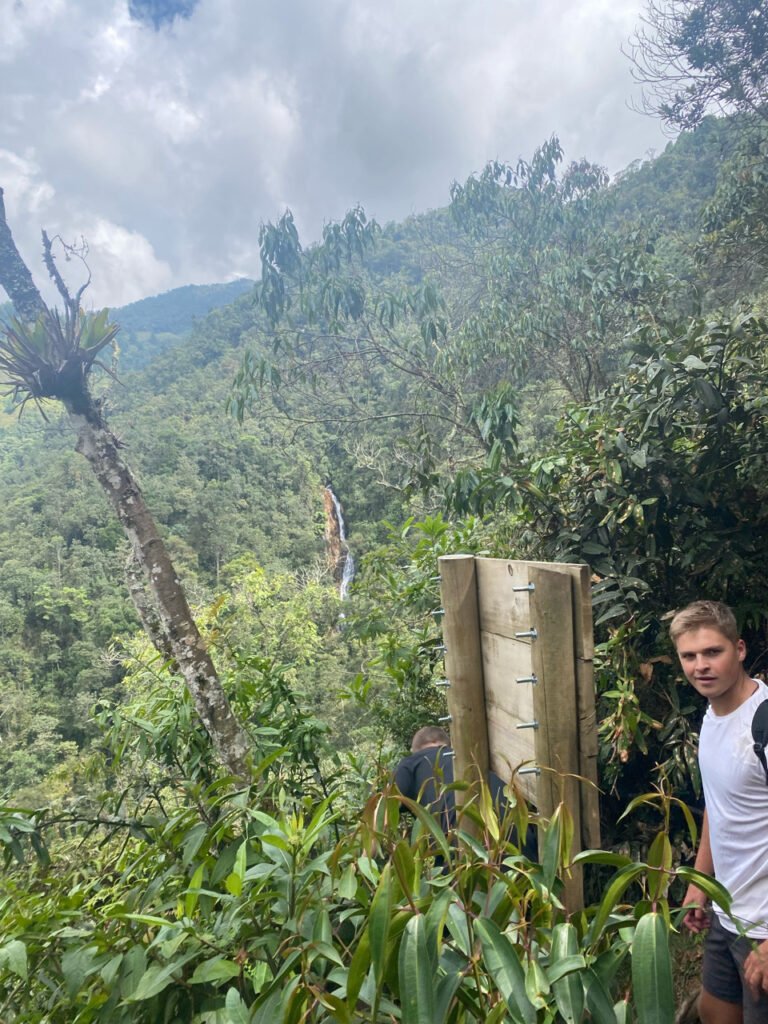
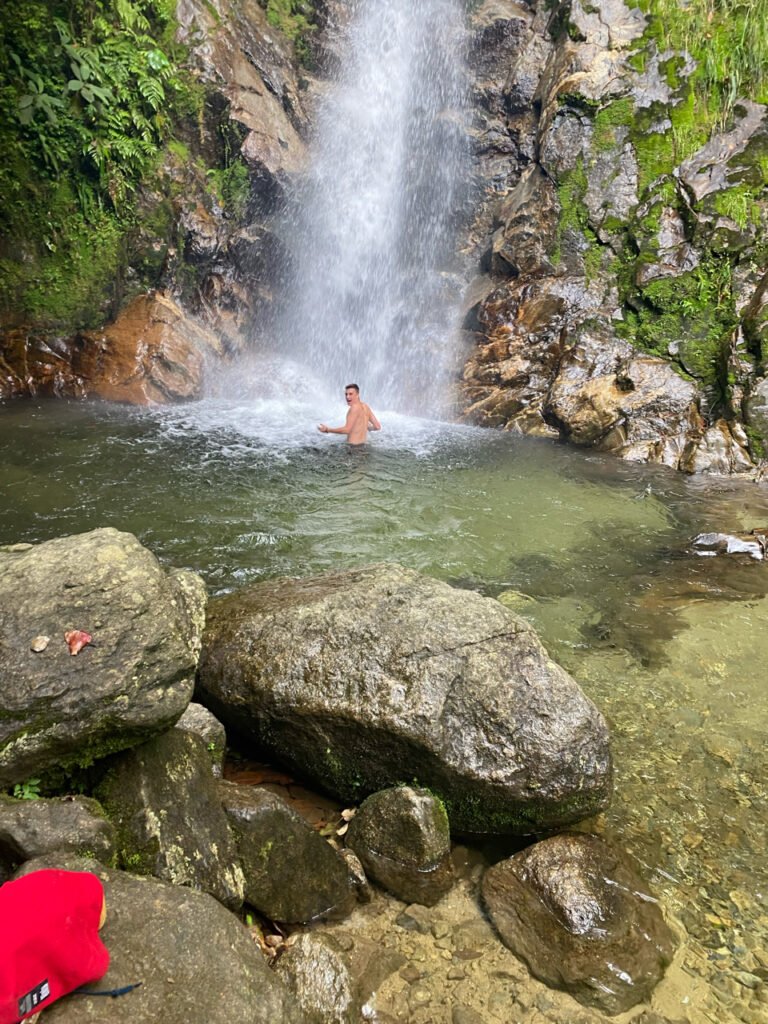
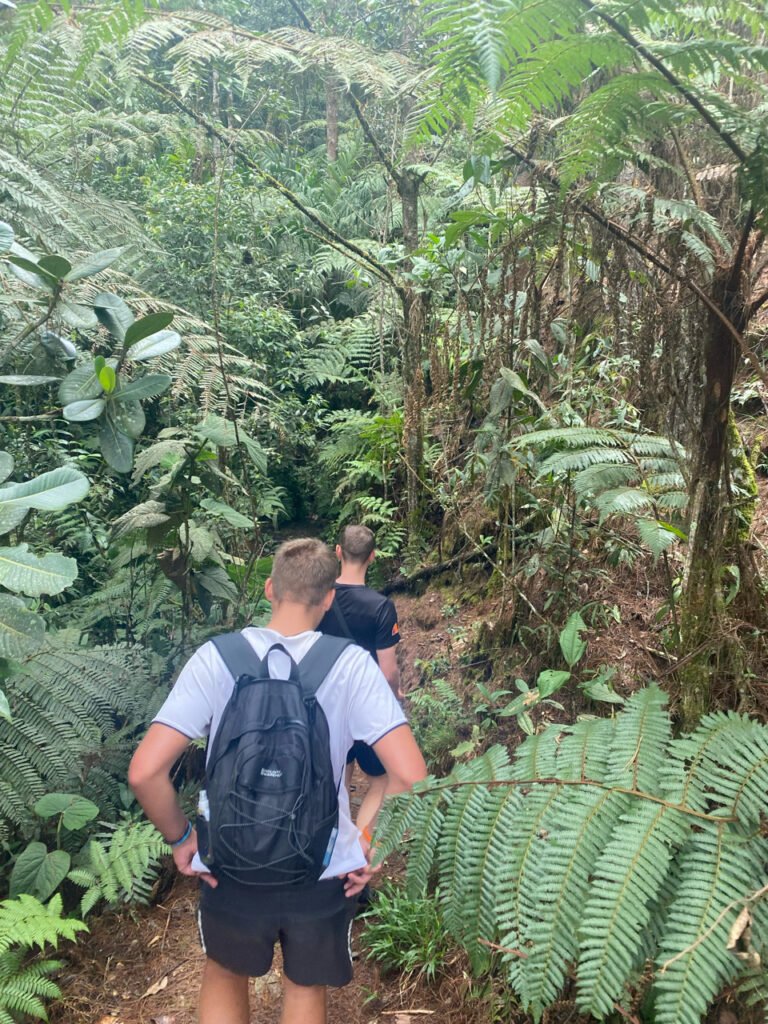

3. Metrocable to Parque Arví
Medellín’s gondola system isn’t just for commuters—it’s your ticket to nature.
How to do it: From Acevedo metro station, hop on the Metrocable to Santo Domingo, then switch to the line heading to Parque Arví. A return trip costs under COP 10,000 (~£2). At the top, explore trails, indigenous markets, and shaded picnic spots.
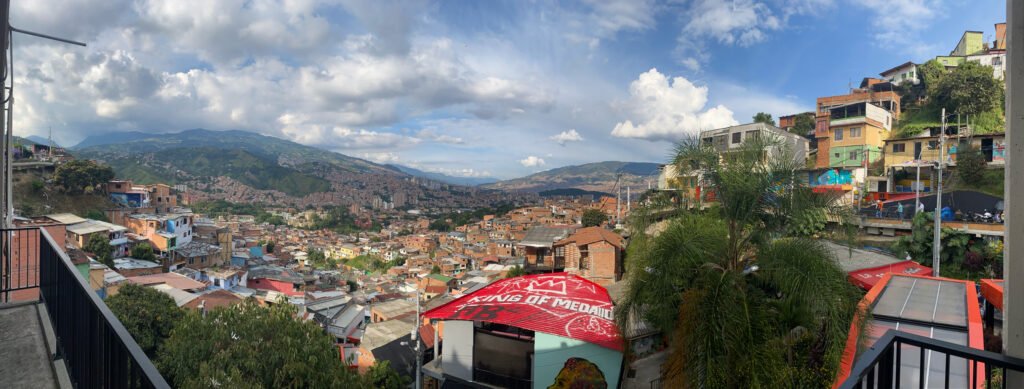
Barrio Pablo Escobar
The area most closely linked with Escobar’s legacy is actually Barrio Pablo Escobar, a neighbourhood on the eastern edge of the city that was built with the drug lord’s money in the 1980s.
You can visit the area with a local guide, which is highly recommended if you want to gain real insight into how the community was shaped—and scarred—by Escobar’s influence. Many of the houses were originally built by his cartel as part of his Robin Hood-style image, and you’ll still see murals, graffiti, and street names referencing his legacy. But make no mistake—this isn’t a shrine. Most locals are trying to move beyond the past, and there’s a complicated mix of pride, pain and pragmatism in how the neighbourhood sees him today.
You’ll also learn how the area has developed in the decades since his death—how families have reclaimed the space, how life continues, and how Medellín has worked hard to rebrand itself as a city of resilience, not violence.
How to visit:
Go with a local guide or tour—this ensures you’re being respectful and also gives you access to stories you simply wouldn’t get otherwise.
Don’t treat it like an Escobar theme park—this is a real neighbourhood with real people.
Avoid flashy clothing or expensive gear, and always ask before taking photos.
It’s a sobering but essential part of understanding Medellín’s transformation. Escobar’s name may draw the tourists, but it’s the strength of the people living here today that’s truly worth seeing.
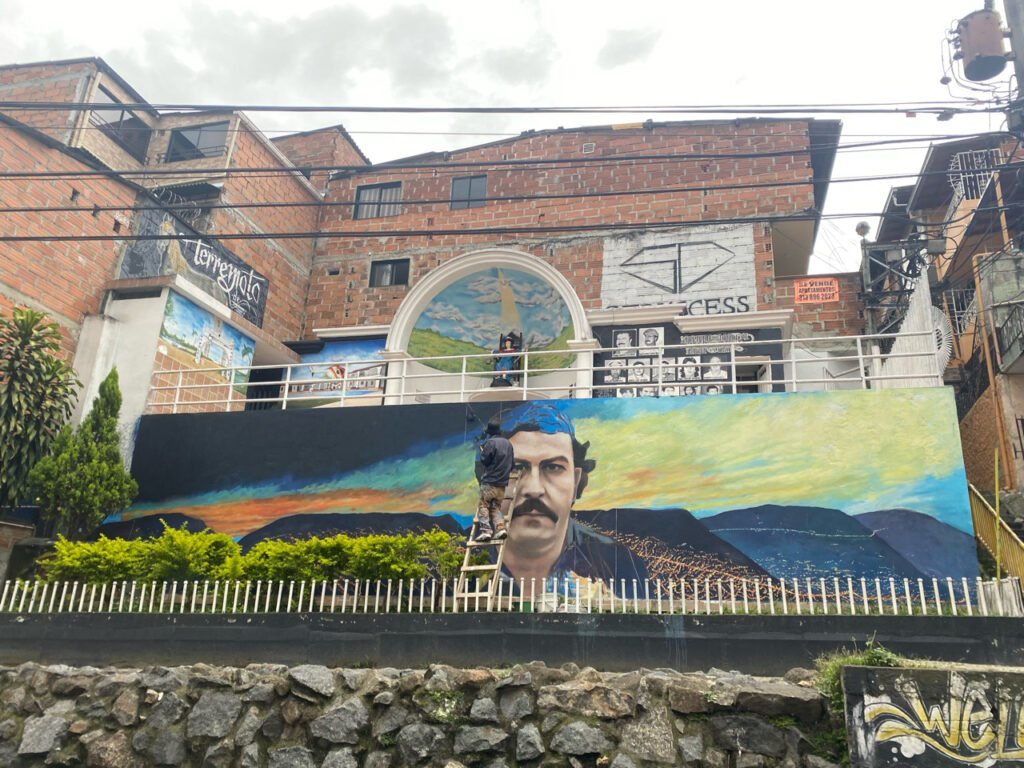
Football in Medellín: A Match Day Like No Other
If you’re even remotely into football (or just love chaos and colour), don’t miss a live match in Medellín. The city is home to two fiercely passionate teams: Atlético Nacional and Independiente Medellín (DIM). The rivalry runs deep, and the atmosphere is nothing short of electric—think flares, drums, chanting, and more limbs than a Glastonbury mosh pit.
We managed to catch a couple of games, including the big one: the Medellín derby, where both teams face off at the Estadio Atanasio Girardot. It was, without exaggeration, one of the maddest, most unforgettable atmospheres we’ve ever witnessed. Fans sing from the first whistle to the last (and then some), entire sections bounce in unison, and the emotional rollercoaster is very, very real.
If you’re going:
Buy your tickets early (either online or at the stadium’s box office a day or two before).
Sit in the neutral or tourist section if it’s your first game.
Avoid wearing team colours, especially outside the stadium—it’s not worth the aggro.
Go with a local or a tour if you want a bit of guidance (and a pre-match beer or two).
Even if you don’t know the teams, just being in the stadium is an experience. The passion Medellín brings to football matches sums up the city itself—intense, loud, a bit mental, and absolutely unforgettable.

Visit Guatapé
We have got you covered for this excursion! Check out our blog post about Guatapé here:
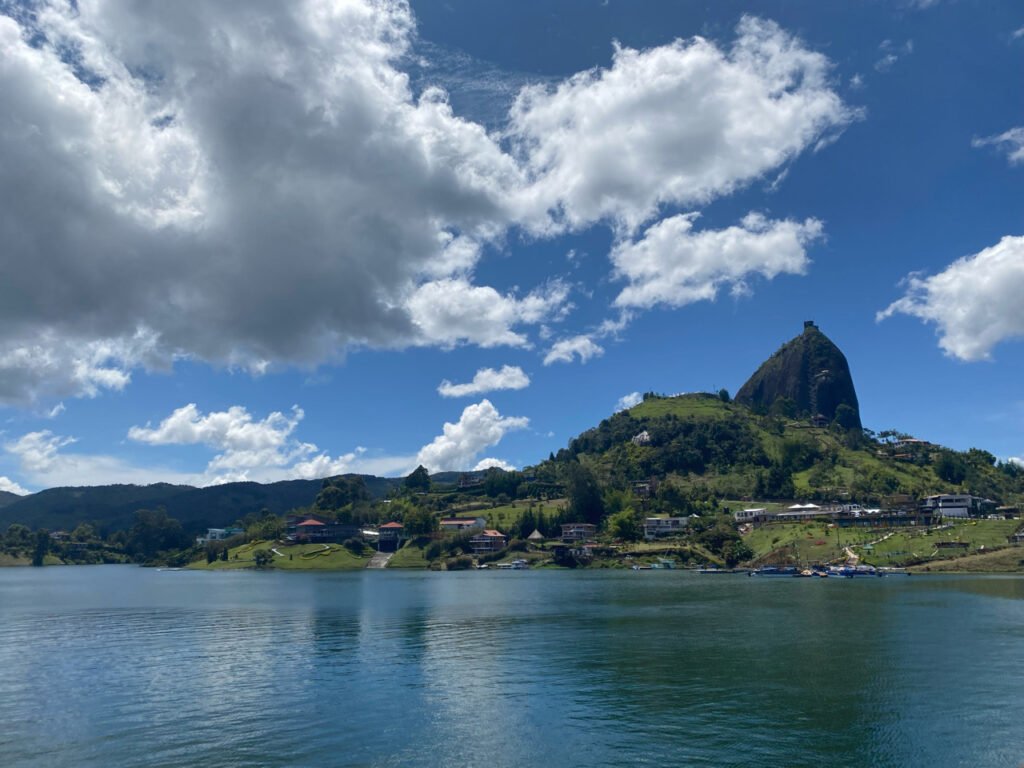
Getting Around Medellín: Trams, Cable Cars & the Legendary Metro
One of the (many) things Medellín gets very right is public transport. The city is home to Colombia’s only metro system, and it’s genuinely brilliant—clean, reliable, cheap, and easy to navigate. You’ll find trams, metro lines and cable cars all interlinked on the same ticketing system, making it a doddle to get from A to B without draining your bank account or your will to live.
The metro (Line A and B) runs north to south and connects easily with the tram line and Metrocable gondolas, which take you up into the hills—yes, hills you’d usually avoid walking unless you fancy a cardio meltdown.
A Few Tips for Riding Like a Local:
Grab a Civica card (metro card) for discounted fares if you’re in town for a while.
Trams are lovely and modern—perfect for getting to areas like Buenos Aires or San Antonio.
The Metrocable is a must, even just for the views. Try it on a clear day and you’ll get some of the best cityscapes in South America.
Avoid rush hour like the plague. We’re talking sardine can levels of packed between 7:00–9:00 AM and 5:00–7:30 PM. Unless you want a full-body cuddle from half the city, steer clear.
Whether you’re heading out to explore Comuna 13, catching a game at the Atanasio Girardot stadium, or hopping your way to the bus terminal, Medellín’s public transport has you covered—and it’ll make you wish every city operated this smoothly.
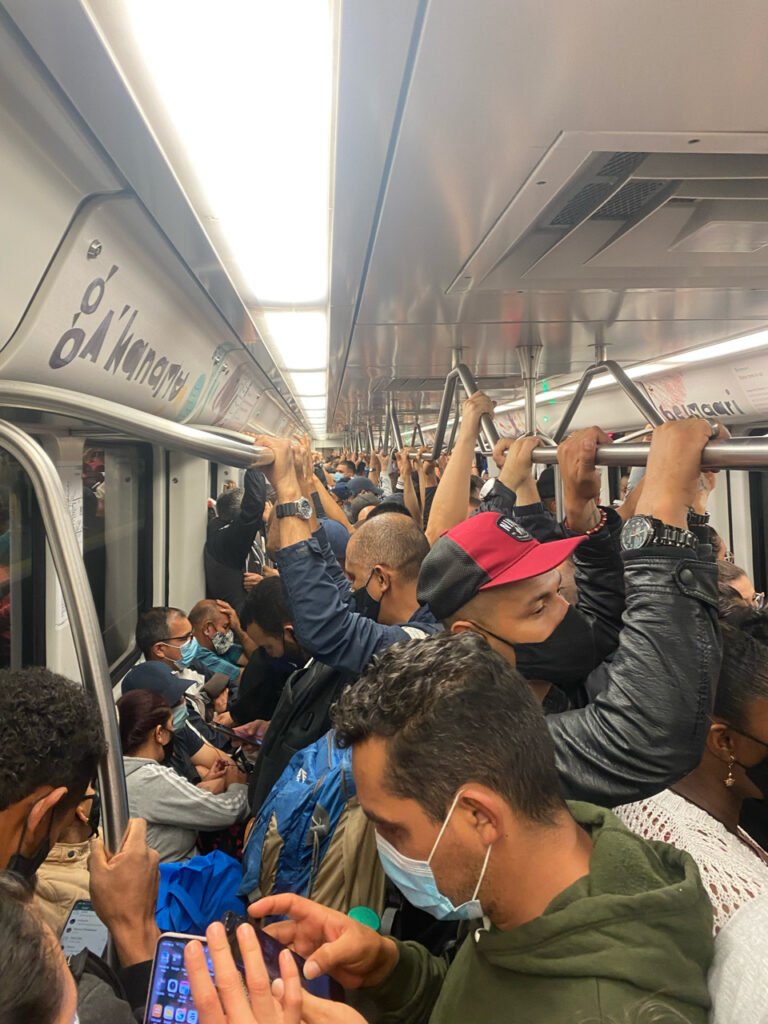
Medellín Nightlife: Calle 70 (La Setenta)
You want nightlife? Medellín delivers. And the best place to start is Calle 70 (Setenta) in Laureles. It’s a lively, authentic strip where locals and travellers go out to dance, drink and debate who makes the best arepas.
You’ll find salsa bars, street food stalls, reggaeton thumping from every corner, and absolutely no shortage of aguardiente-fuelled mischief. Best part? It’s way less touristy than Parque Lleras.
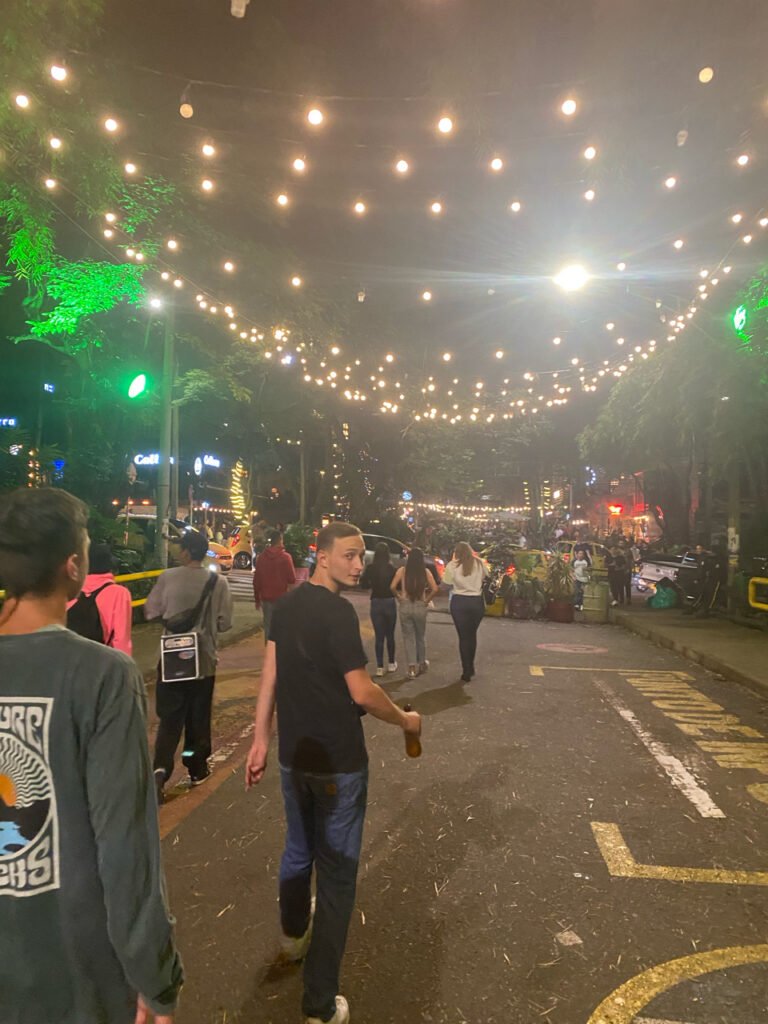
How To Get to Medellín
Medellín is super well-connected. You can fly in to José María Córdova International Airport (MDE) from Bogotá or international hubs. The airport’s about 45 minutes outside the city, and the bus into town is the budget-friendly option, but a taxi or app ride will get you to your hostel quicker.
Buses run regularly from cities like Bogotá, Cali and the coffee region, though be warned – Colombian buses can be loooong and winding. Still, the views make up for it.
Where To Next?
Medellín makes a great base for going either north or south:
Heading north? Consider Cartagena, Santa Marta, and Palomino for beaches, heat and Caribbean coast charm.
Heading south? Make your way to Salento for the coffee triangle, then possibly on to Cali or Popayán, depending on your route into Ecuador.
- We visited the coffee farm to begin our journey that led and inspired us to create our own coffee company: Gringo Roasters.

Why We Fell in Love with Medellín
There’s something about Medellín – the contrasts, the creativity, the chaos – that just sticks with you. From hillside barrios to rooftop bars, jungle hikes to late-night dance floors, it has a pulse that’s impossible to ignore.



